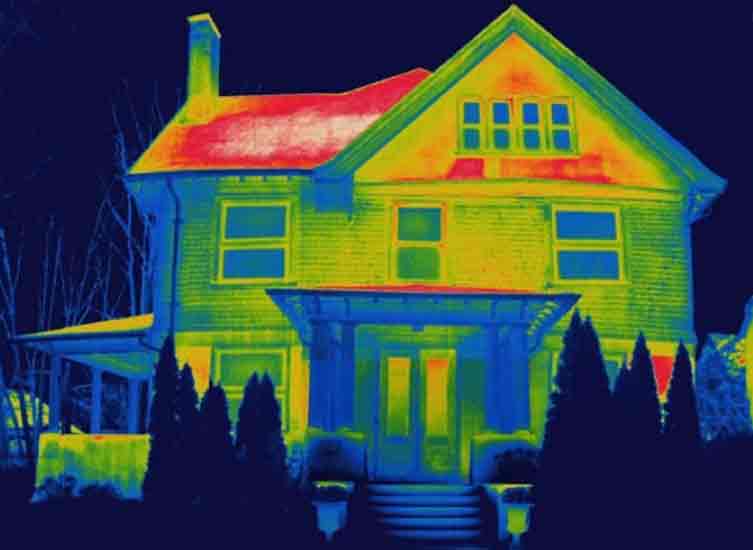Introduction to Thermal Imaging in Home Inspections
What are Thermal Cameras?
Thermal cameras, such as the FLIR E4, E6-XT, E8-XT, and C5, are advanced tools used in home inspections to detect and visualize temperature differences. Unlike traditional cameras, thermal cameras capture infrared radiation emitted by objects, allowing professionals to identify potential problems that may not be visible to the naked eye. These cameras create thermal images that display variations in heat signatures, helping inspectors pinpoint issues such as insulation gaps, air leaks, moisture intrusion, electrical faults, and HVAC system malfunctions. By providing a visual representation of temperature differences, thermal cameras aid in diagnosing problems and assessing the overall condition of a property.
Importance of Thermal Cameras in Home Inspections
Thermal cameras play a crucial role in home inspections, offering several benefits to inspectors and homeowners. Firstly, these cameras enable inspectors to identify hidden issues that may not be apparent during a visual assessment. For example, thermal imaging can reveal insulation gaps or air leaks that compromise energy efficiency and lead to increased utility bills. Also, thermal cameras can detect moisture intrusion, leading to mold growth and structural damage if left unnoticed.
Furthermore, thermal cameras help inspectors assess the performance of HVAC systems by identifying temperature variations and potential faults. Thermal cameras also aid in preventing electrical fires by detecting overheating electrical components. Overall, using thermal cameras in home inspections enhances the accuracy and efficiency of the inspection process, leading to more comprehensive and reliable reports.
Structural Issues Detected by Thermal Imaging
 Heat Loss and Insulation Problems
Heat Loss and Insulation ProblemsThermal cameras used in home inspections are highly effective in identifying heat loss and insulation problems. These cameras can detect temperature variations in walls, ceilings, and floors, allowing inspectors to pinpoint areas where insulation is inadequate or damaged. By identifying these issues, homeowners can take necessary steps to improve energy efficiency and reduce heating and cooling costs. Thermal cameras can also identify areas where cold air is infiltrating the home, such as around windows and doors. Additionally, they can help identify areas where insulation has settled or been improperly installed, leading to thermal bridging and energy loss. Overall, thermal cameras are invaluable tools in detecting heat loss and insulation problems, enabling homeowners to make informed decisions about improving their home’s energy efficiency.
Moisture Intrusion and Water Damage
Thermal cameras are also useful in detecting moisture intrusion and water damage during home inspections. By detecting temperature differences, these cameras can identify areas of hidden moisture, such as behind walls or under flooring. Moisture intrusion can lead to mold growth, structural damage, and decreased indoor air quality. Thermal cameras can help identify the source of the moisture and determine the extent of the damage, allowing homeowners to take prompt action to mitigate the issue. Whether it’s a leaky pipe, a roof leak, or a plumbing issue, thermal cameras can quickly identify areas of concern. By detecting moisture early on, homeowners can prevent further damage and ensure a safe and healthy living environment.
Electrical Problems Detected by Thermal Cameras
Overloaded Circuits and Electrical Fires
Thermal cameras used in home inspections effectively detect overloaded circuits and potential electrical fires. By capturing thermal images, these cameras can identify areas where electrical components generate excessive heat due to overloading. This information helps homeowners and inspectors pinpoint problems before they escalate into dangerous situations. Overloaded circuits can cause electrical fires if left unaddressed, making thermal cameras essential for proactive maintenance and safety. The FLIR E4 Compact Thermal Imaging Camera (ASIN: B0115XR01C) is a suitable product providing clear and detailed thermal images that accurately identify overheating circuits.
Faulty Wiring and Electrical Hazards
Faulty wiring is a common issue discovered during home inspections, posing severe electrical hazards. Thermal cameras detect these hazards by revealing abnormal heat patterns associated with faulty wiring. Thermal cameras can prevent potential electrical shocks, short circuits, and even fires by identifying areas where heat is generated due to loose connections, damaged insulation, or overloaded circuits. The FLIR C5 Compact Thermal Imaging Camera (ASIN: B0892MZZT1) is a versatile and portable tool with advanced thermal imaging capabilities that can effectively identify faulty wiring and electrical hazards. Its compact size and rugged construction make it ideal for home inspections.
HVAC System Issues Detected by Thermal Cameras

Air Leaks and Inefficient Ductwork
Thermal cameras are valuable for detecting air leaks and inefficient ductwork during home inspections. These cameras can identify temperature differences that indicate air leaks or poorly insulated areas by capturing thermal images. The FLIR E4 Compact Thermal Imaging Camera (ASIN: B0115XR01C) or the FLIR C5 Compact Thermal Imaging Camera (ASIN: B0892MZZT1) would be suitable for this purpose. These cameras offer crisp resolution and accurate temperature data, allowing inspectors to pinpoint areas of concern easily. Homeowners can address air leaks and inefficient ductwork to improve energy efficiency, reduce utility bills, and enhance indoor comfort by identifying air leaks and inefficient ductwork.
Malfunctioning Components and Energy Wastage
Another common problem thermal cameras detect during home inspections is malfunctioning components and energy wastage. These cameras can detect anomalies in electrical systems, HVAC units, and other equipment by capturing thermal images that reveal abnormal heat patterns. The FLIR E4 or FLIR C5 cameras are ideal for this type of inspection. By identifying malfunctioning components, homeowners can take proactive measures to prevent potential hazards, reduce energy wastage, and avoid costly repairs. Thermal cameras provide valuable insights into the overall health of a home’s systems, enabling homeowners to prioritize maintenance and improve energy efficiency.
Plumbing and Leak Detection with Thermal Cameras
Hidden Water Leaks and Mold Growth
Thermal cameras have become invaluable tools for home inspections, especially when it comes to detecting hidden water leaks and potential mold growth. These cameras can quickly identify areas of moisture and temperature variations, allowing inspectors to pinpoint the source of leaks behind walls or under floors. By identifying these hidden water leaks early on, homeowners can prevent further damage to their property and avoid costly repairs.
In addition to water leaks, thermal cameras are also effective in detecting potential mold growth. Mold thrives in damp and dark environments, often hidden from plain sight. With a thermal camera, inspectors can easily identify areas with abnormal temperature patterns, indicating the presence of moisture and a potential breeding ground for mold. By addressing these issues promptly, homeowners can avoid health risks associated with mold exposure and maintain a safe living environment.
- Check out: Mold Basics
Pipe Blockages and Plumbing Failures
Thermal cameras are useful in detecting hidden water leaks and mold growth and identifying pipe blockages and plumbing failures during home inspections. By capturing thermal images, these cameras can detect temperature differences caused by clogs or pipe obstructions, helping inspectors identify potential issues before they become significant problems.
Plumbing failures, such as leaks or faulty connections, can be easily identified using thermal cameras. Inspectors can quickly pinpoint areas of concern by detecting temperature variations around plumbing fixtures and recommend necessary repairs or replacements. This proactive approach can save homeowners from unexpected plumbing emergencies and costly repairs.
Other Common Problems Detected by Thermal Cameras: A Guide for Home Inspections

Pest Infestations and Termite Damage
Thermal cameras have revolutionized the way home inspections are conducted, particularly when it comes to detecting pest infestations and termite damage. These cameras use infrared technology to capture heat signatures, making it easier to identify areas of concern. Regarding pest infestations, thermal cameras can detect hidden colonies behind walls or under floors, allowing homeowners to take swift action. Additionally, these cameras can pinpoint areas where termites have caused damage by identifying temperature changes caused by moisture or decay. Using thermal cameras during home inspections, homeowners can catch pest infestations and termite damage early on, preventing further deterioration and costly repairs.
Structural Weaknesses and Foundation Cracks
Another crucial area where thermal cameras excel in home inspections is the identification of structural weaknesses and foundation cracks. These cameras can detect temperature variations within walls, floors, and ceilings, indicating potential structural issues. By identifying these weaknesses, homeowners can address them promptly, avoiding potential hazards and costly repairs. Additionally, thermal cameras can locate foundation cracks by detecting temperature differences along the crack lines. This information is invaluable, as foundation cracks can lead to significant structural problems if left unattended. With thermal cameras, home inspections become more comprehensive, ensuring that any structural weaknesses or foundation cracks are identified early on for timely repairs and maintenance.




